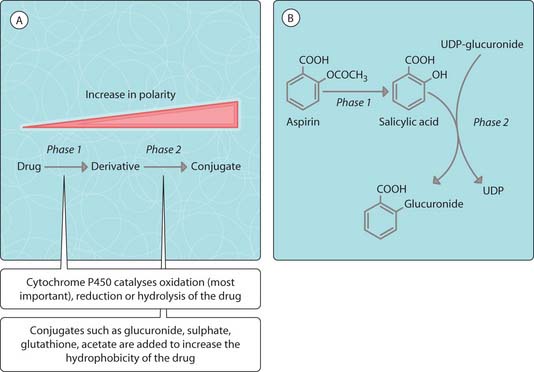4 Pharmacokinetics
metabolism excretion
Drug metabolism
Phase 1
CYP belongs to a family of haem-containing enzymes and is the major catalyst of drug biotransformation involving oxidative and reductive reactions. It has evolved to biotransform a wide variety of environmental chemicals, food toxins and drugs (Fig. 3.4.1). Oxidation requires NADPH.
Phase 2
These reactions involve the formation of a covalent link between an exposed functional group on a parent compound with glucuronic acid, sulphate, glutathione, amino acids or acetate. This conjugation process results in a highly polar water-soluble metabolite, which is generally inactive and rapidly excreted into the urine or faeces (Fig. 3.4.1).
Only gold members can continue reading. Log In or Register to continue
Stay updated, free articles. Join our Telegram channel

Full access? Get Clinical Tree






